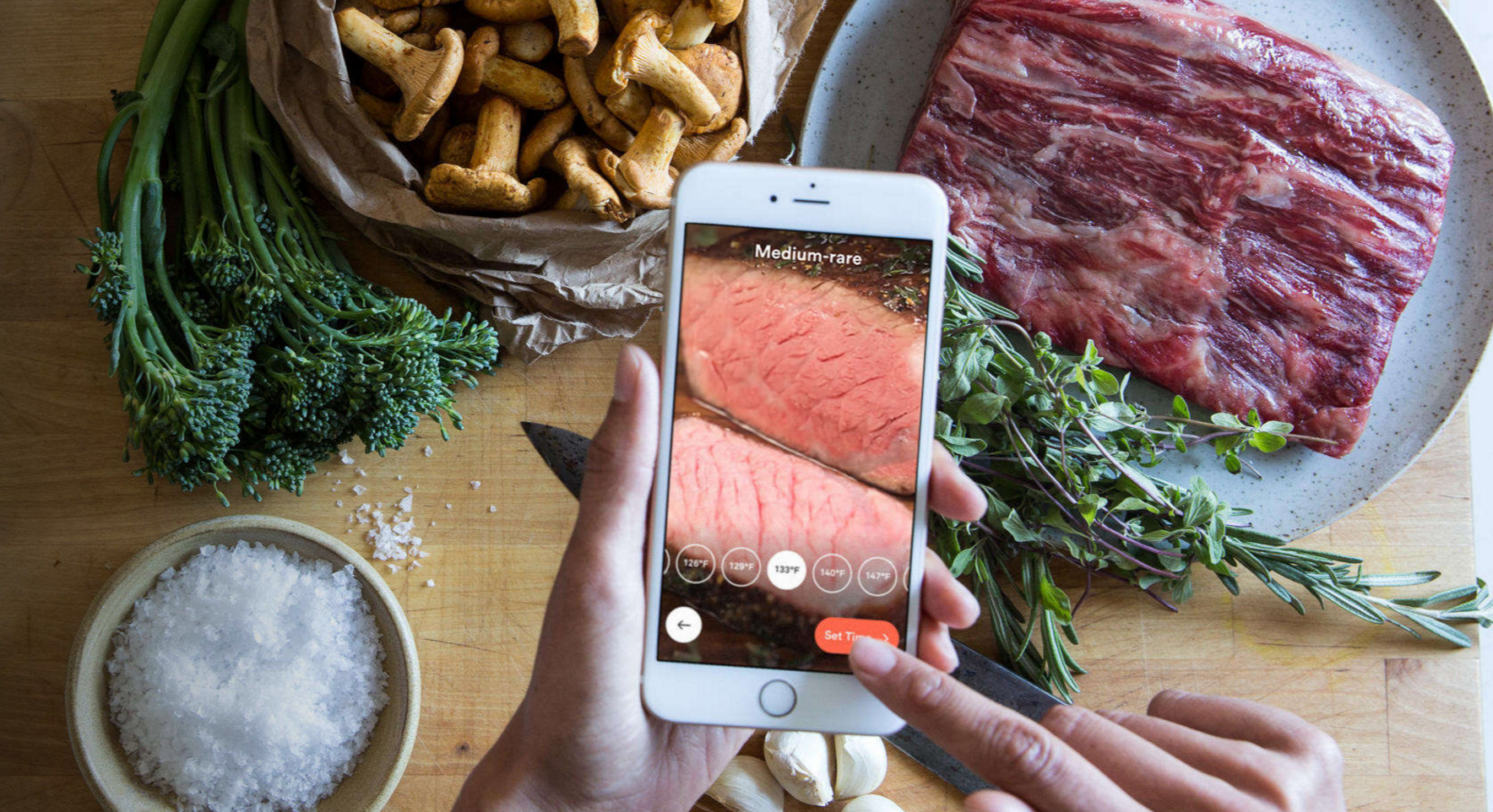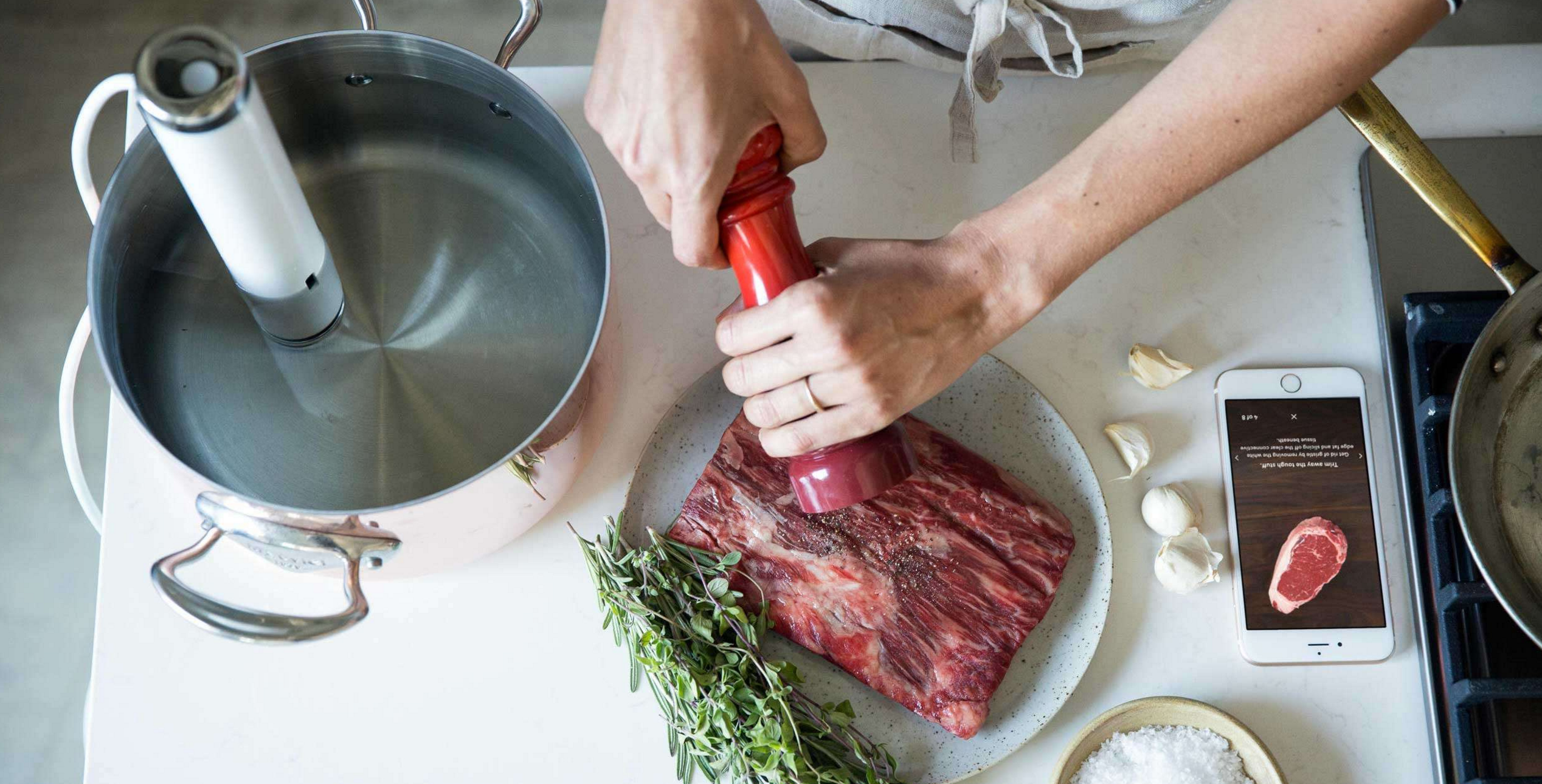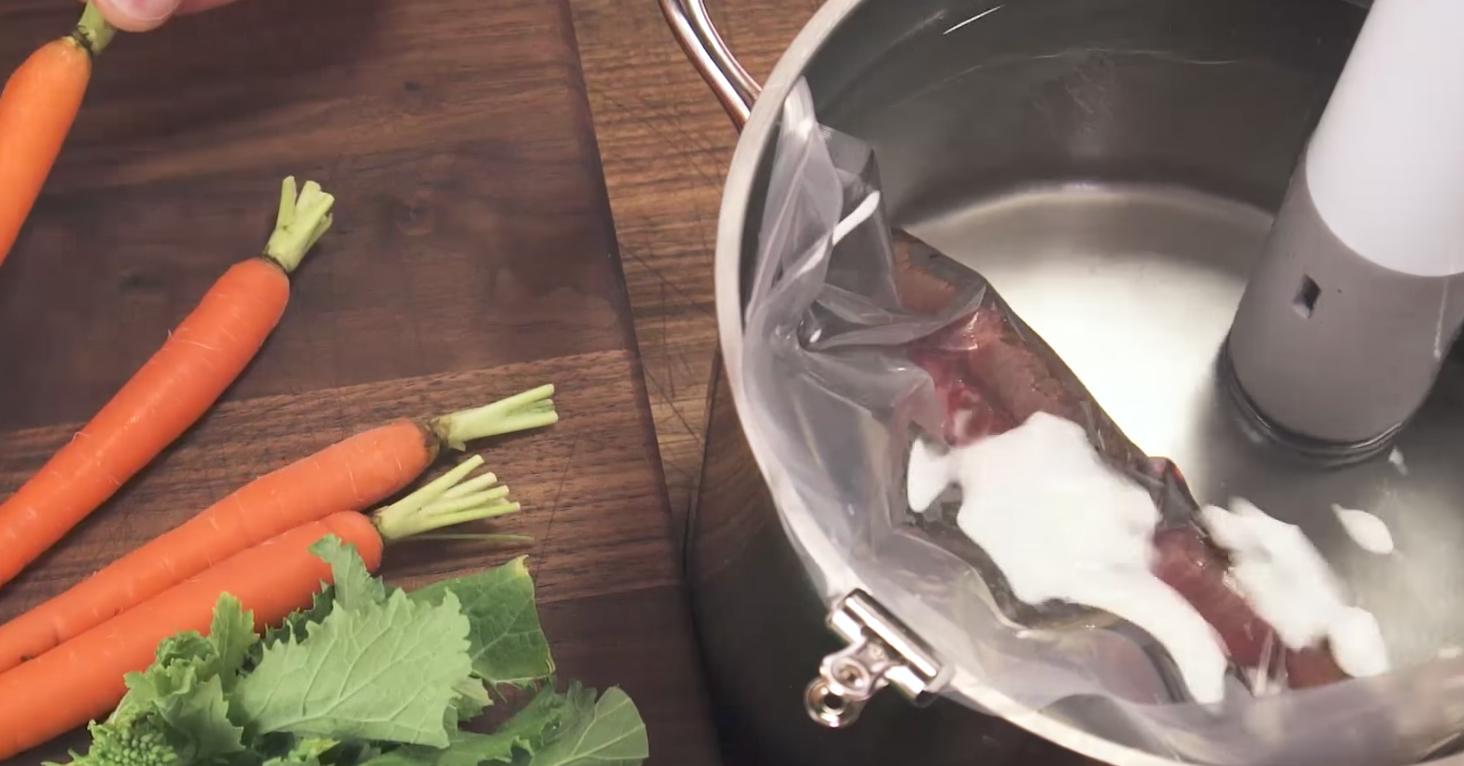Joule Sous Vide: A Chef’s Magic Wand
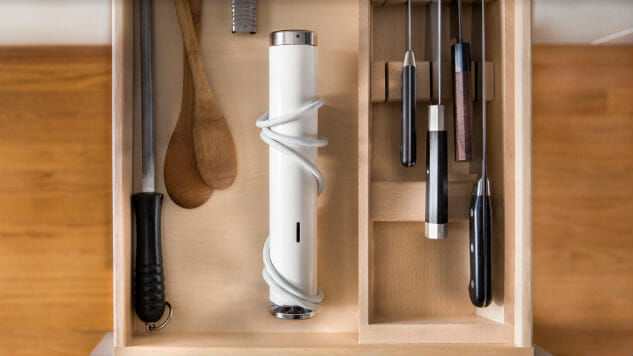
Technology makes it virtually impossible to not have a perfectly cook meal expertly prepared with minimal effort using fresh ingredients. That juicy and tender steak you had at the restaurant can easily be made using a sous vide appliance, a category of kitchen tool designed for the home cook that has been rising in popularity in recent years. And the latest company to enter this space is ChefSteps with an immersion cooking device called the Joule.
Joule enters a growing field of new sous vide devices that makes it even easier for home cooks to achieve restaurant results. Like the $199 Joule, some of these devices—Anova’s $149 Precision Cooker and Nomiku’s $249 Immersion Circulator come to mind—come with Wi-Fi connectivity, allowing you to start your cooking remotely to save even more time in the kitchen. There are plenty more models from Sansaire, InstantPot, Magic Mill, Gourmia and others that come in a variety of shapes, sizes and price points.
But at its core, all these devices help to circulate and maintain the temperature of a water bath to keep your meats, fish, poultry, vegetables and even desserts cooking at a precise temperature for a set amount of time. This turns cooking into essentially a fool-proof science, and the benefit is that you’re not overcooking your meals, resulting in more nutrients retained in vegetables, perfectly cooked cuts of meat that is tender and not tough, flavorful fish and neatly executed desserts.
Design
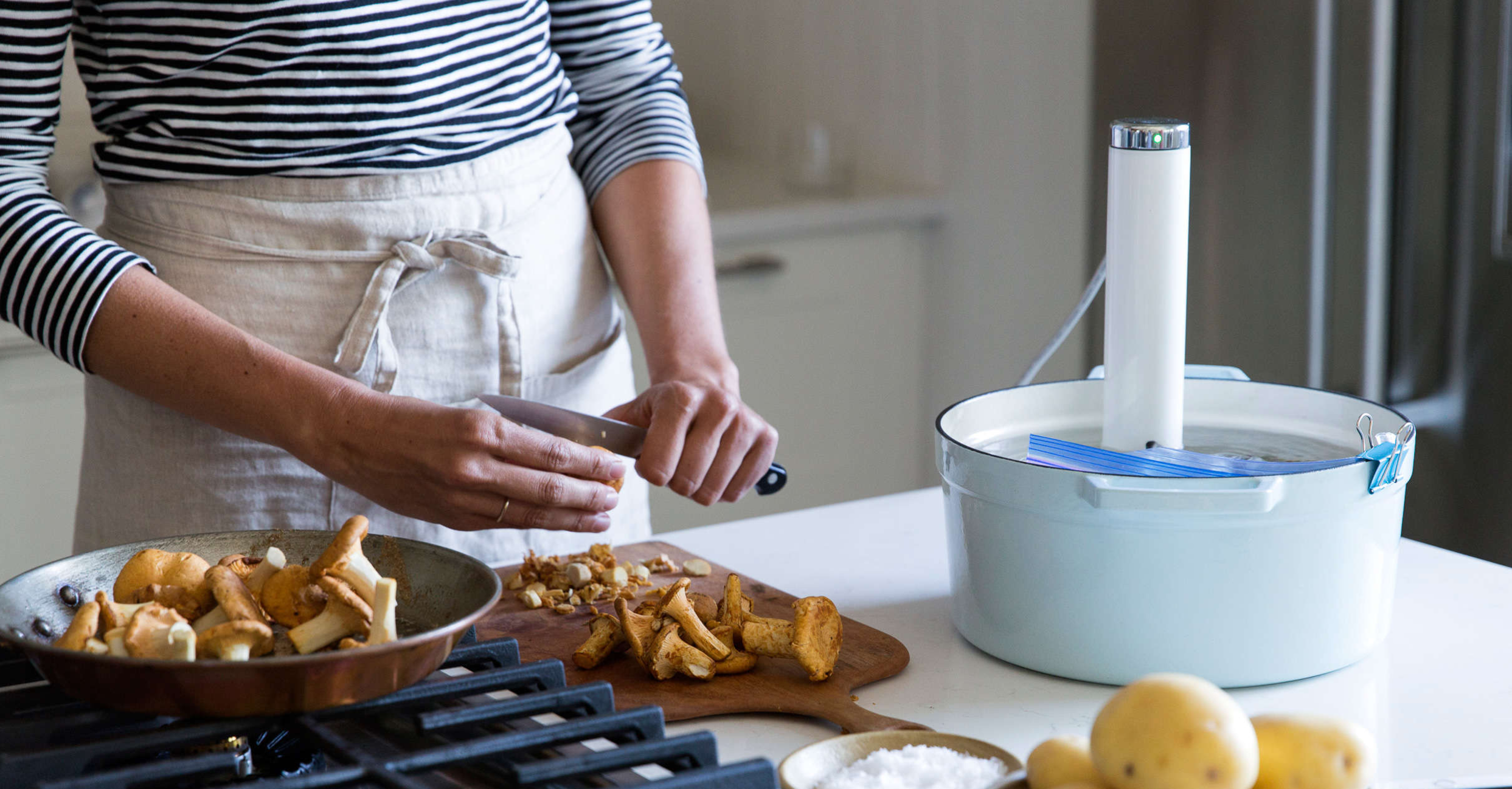
Compared to the immersion cookers that I had previously reviewed from Anova and Sansaire, ChefSteps’ Joule is by far the most compact. The Joule shares the same tubular design with Anova’s Precision Cooker. However, it sheds Anova’s controls for a more simple design, like Sansaire’s cooker.
The simple design with a white hue and chrome accents on the top and bottom ends gives the Joule an Apple-like aesthetic. At 11 inches tall, the Joule weighs only 1.2 pounds and its 1.85-inch diameter dimension means that the device won’t take up much counter space or drawer space when you’re not using it. It’s also significantly lighter than its rivals. The Sansaire clocked in at a hefty 3.2 pounds while Anova’s unit was double the weight of the Joule. To me, Joule reminds me of a magic wand, and I charmingly refer to it as my chef’s wand when friends ask about its presence in my kitchen.
And while Sansaire and Anova straddle the analog and digital divide by offering on-device controls for cooking, the Joule is completely dependent upon a smartphone or tablet. You won’t be able to adjust the cooking temperature or set cooking times without a smartphone. Shedding on-device buttons and controls helps make Joule compact, but there are drawbacks in embracing a fully digital strategy. By default, I set my phone’s screen to timeout after 30 seconds of inactivity, which could lead to awkward juggling, hand washing and toweling down my wet paws to get my phone to turn on again in the kitchen if I don’t remember to change the screen timeout setting.
Having a control Nest Thermostat-like wheel to adjust the temperature, like the Sansaire, or buttons, like the Anova, would make it easier to operate the sous vide cooker when handling wet ingredients, raw meats or foods with the possibility for contamination.
Cooking Sous Vide
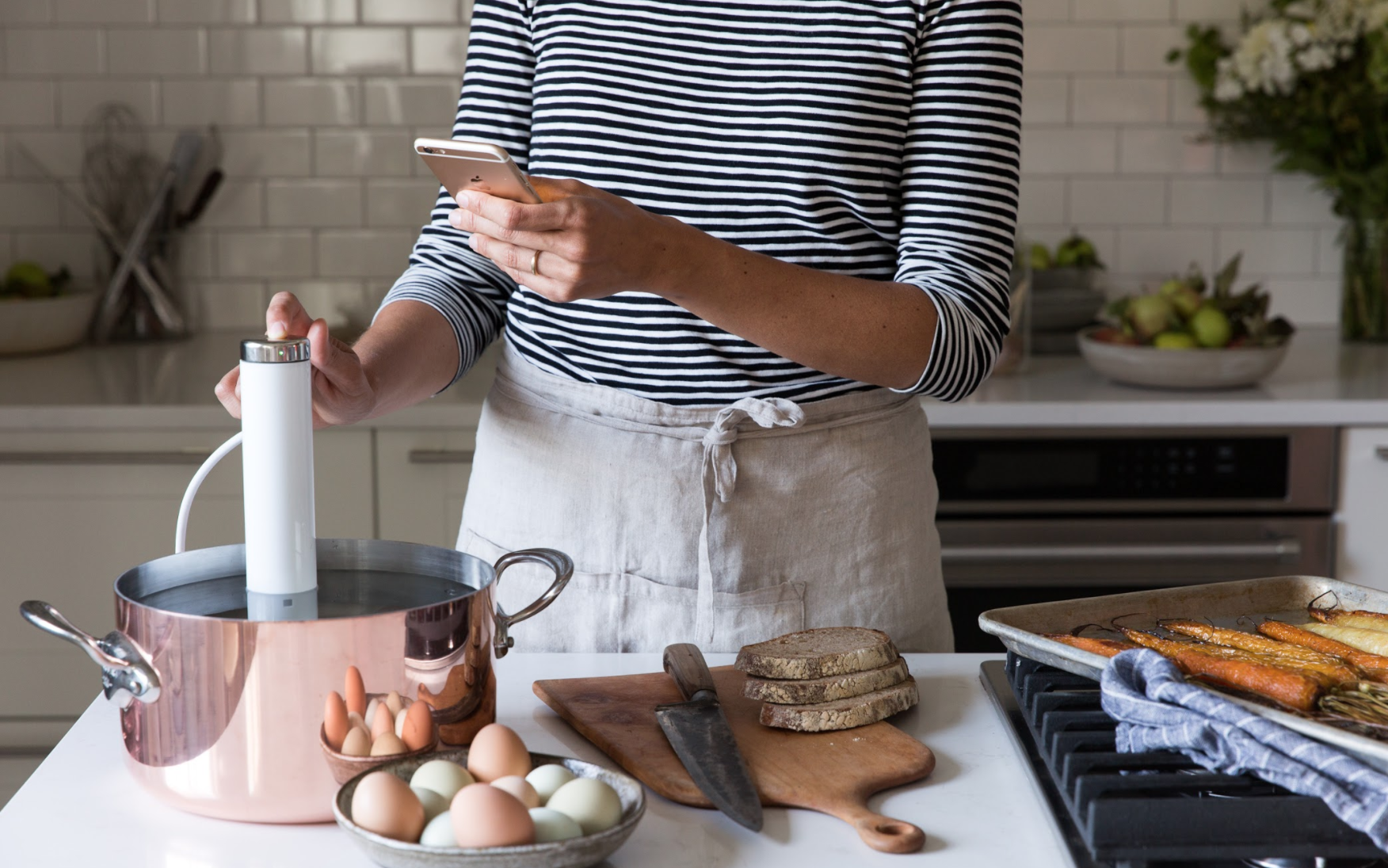
-

-

-

-

-

-

-

-

-

-

-

-

-

-

-

-

-

-

-

-

-

-

-

-

-

-

-

-

-

-

-

-

-

-

-

-

-

-

-

-

